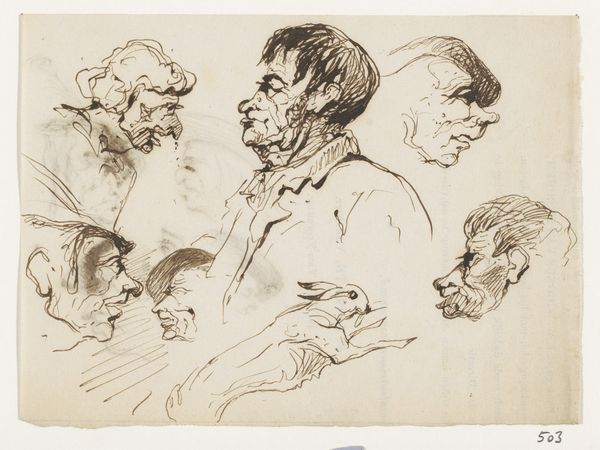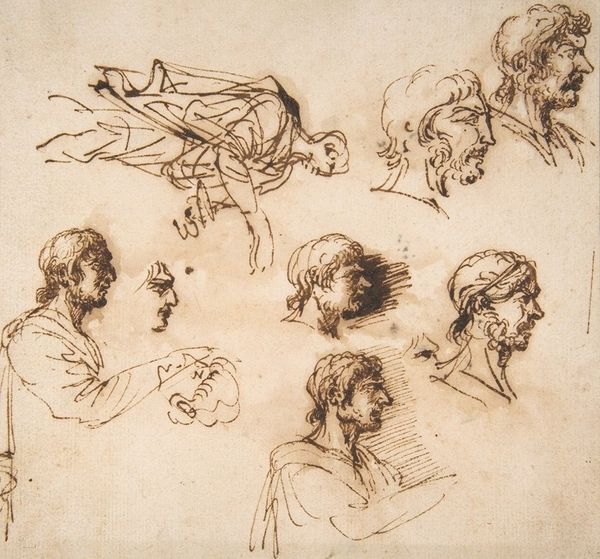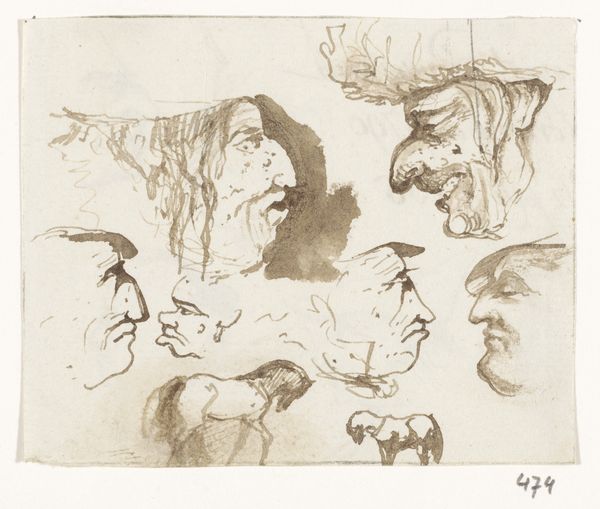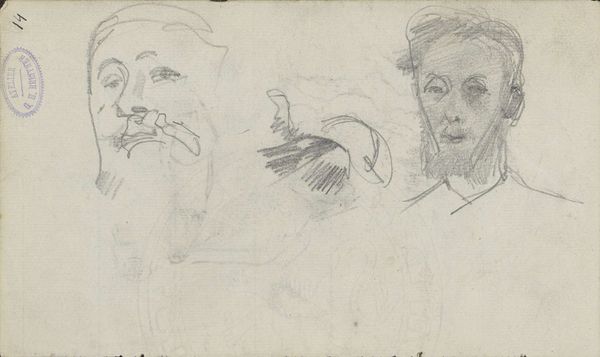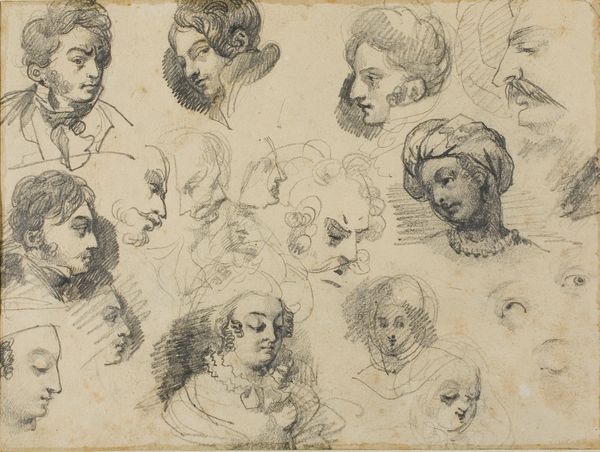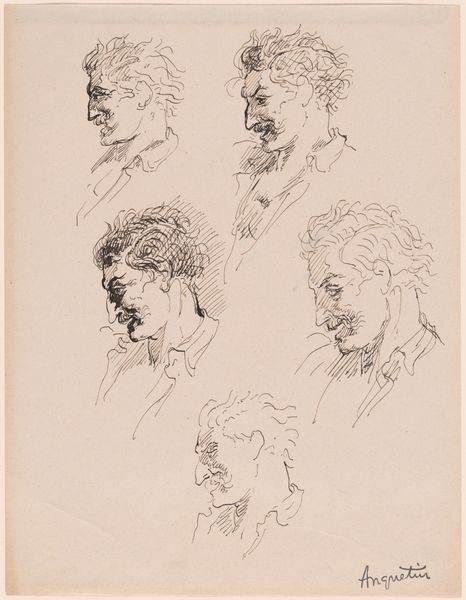
Six studies for Corréard and Savigny in the ‘Raft of the Medusa’ before 1818
0:00
0:00
drawing, pencil
#
portrait
#
pencil drawn
#
drawing
#
study drawing
#
charcoal drawing
#
pencil drawing
#
romanticism
#
pencil
#
history-painting
Copyright: Public Domain: Artvee
Théodore Géricault made these studies for his painting 'The Raft of the Medusa', likely in France during the 1810s. They show his preparatory sketches of the survivors Corréard and Savigny. Géricault’s masterpiece captured a harrowing event, the 1816 shipwreck of the French naval frigate Medusa. The disaster was not merely a maritime tragedy but a scandalous episode that exposed the incompetence and corruption of the French Restoration government, which had appointed an unqualified captain. By immortalizing the suffering of ordinary sailors, Géricault challenged the conventions of history painting, traditionally reserved for heroic depictions of military or state figures. Here, the artist confronted viewers with the grim realities of human suffering, forcing them to question the social order. To understand Géricault's 'Raft of the Medusa' and the sketches related to it, one must delve into the historical archives, scrutinize the political climate of post-Napoleonic France, and analyze the institutional structures that shaped artistic production and reception.
Comments
No comments
Be the first to comment and join the conversation on the ultimate creative platform.
